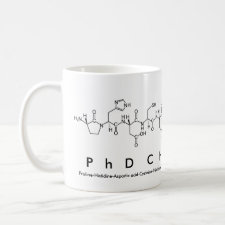
Authors: Rich JO, Dordick JS
Publication date: 2001
Chapter title: Imprinting enzymes for use in organic media.
Chapter number: 2
Page numbers: 13-17.
DOI: 10.1385/1-59259-112-4:13
Book title: Enzymes in nonaqueous solvents: Methods and protocols
Editors: Vulfson EN, Halling PJ, Holland HL
Publisher: Humana Press
City: Totowa, NJ
Series title: Methods in Biotechnology
Volume number: 15
Abstract: Enzymes suspended in nonaqueous media are more rigid than in aqueous media (1,2). This increased rigidity is thought to be the result of increased electrostatic and hydrogen-bonding interactions among the surface residues of the protein in organic solvents (3). Despite this rigidity, enzymes remain active and selective in organic solvents, and this has led to a large number of applications that have impacted the chemical, pharmaceutical, and polymer industries (4-6). Interestingly, because of the rigid structure of biocatalysts when placed in organic media, it has been possible to alter selectivity (e.g., enantioselectivity and regioselectivity) and increase activity through pretreating the enzyme with an inhibitor/substrate analog (7,8). This process, known as "molecular imprinting," locks the enzyme into a conformation that is favorable for catalysis during lyophilization through the addition of the desired substrate or a substrate analog to the enzyme solution prior to freezing Fig. 1). Furthermore, the ligand may prevent the formation of inactive "microconformations" in the active site created during the lyophilization process (9). These hypotheses have been supported by experiments involving the addition of water to the imprinted enzymes. The addition of water to the organic solvent reaction mixture has been shown to strongly depress the activation phenomenon of imprinting because of an increase in enzyme flexibility upon rehydration (8,10).



Join the Society for Molecular Imprinting

New items RSS feed
Sign-up for e-mail updates:
Choose between receiving an occasional newsletter or more frequent e-mail alerts.
Click here to go to the sign-up page.
Is your name elemental or peptidic? Enter your name and find out by clicking either of the buttons below!
Other products you may like:
 MIPdatabase
MIPdatabase









